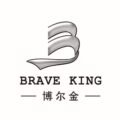
A laser engraving machine is an efficient tool for creating various types of markings, utilizing a laser beam to engrave or mark a wide range of materials with precision. By using a non-contact processing method, it can etch clear patterns, text, and logos on surfaces like metal, plastic, wood, and more. The machine ensures that the markings are durable and long-lasting. Whether it’s for product serial numbers, logo designs, or manufacturing dates, laser engraving machines offer high precision and flexibility, making them ideal for industrial production, advertising design, and everyday product customization. With advantages like fast speed, ease of use, no need for consumables, and being environmentally friendly, they greatly enhance both the efficiency and quality of marking production.

Laser engraving can be used on a variety of materials such as steel, aluminum, stainless steel, polymers, and rubber. It is frequently employed to identify parts and products with 2D barcodes (data matrix codes or QR codes), alphanumeric serial numbers, VIN numbers, and logos.
How Does Laser Marking Work? To create a lasting mark, laser engraving systems generate focused beams of light that contain high levels of energy. When a laser beam strikes a surface, its energy is transferred in the form of heat, creating black, white, and sometimes colored marks.
The Science of Lasers Explained Laser beams are generated through a process known as LASER, an acronym for “Light Amplification by the Stimulated Emission of Radiation.”

First, a special material is stimulated with energy, causing it to release photons. The newly released photons then stimulate the material again, generating more and more photons. This creates an exponential number of photons (or light energy) within the laser cavity.
This accumulated energy is released as a single, coherent beam of light directed at its target using mirrors. Depending on the energy level, it can etch, engrave, or anneal surfaces with extreme precision.
Different Lasers for Different Materials Laser light energy is measured using wavelengths, or nanometers (nm). Specific wavelengths are used for different applications and can only be generated by certain types of lasers.
Fiber lasers stimulate a rare-earth metal known as ytterbium to generate photons at the 1,064 nm wavelength. This wavelength is ideal for marking metals, as a significant amount of its energy is absorbed by the material.
CO2 lasers stimulate CO2 gas to generate wavelengths between 9,000 nm and 11,000 nm, covering a wide range of organic materials that require different wavelengths. The most common wavelength for organic materials is 10,600 nm.

Laser engraving Benefits Laser marking has become the technology of choice for manufacturers seeking high-quality marking, offering numerous advantages compared to older marking methods like dot peen marking, inkjet printing, and printed labels.
- Fastest Direct Part Marking Technology: Laser marking is the fastest direct part marking technology, making it a sought-after option when short cycle times must be met. Laserax takes pride in benchmarking the fastest lasers on the market due to the high quality of our hardware and software components.
- High-Contrast Marks: Laser marking is a precise process that provides consistent results. You get a near-perfect readability rate, ensuring that the number of nonconforming parts is kept to a minimum.
- Green Technology Without Consumables: Laser marking makes the manufacturing world more sustainable by replacing polluting technologies that rely heavily on consumables. Fiber laser technology is also known for its electrical efficiency, further reducing your environmental footprint.
- Low Maintenance: Laser marking is a non-contact process, so no mechanical wear occurs between the system and the part being marked. This helps you keep maintenance and downtime to a minimum. Minimal maintenance is needed to remove the accumulated dust from the lens.
- Complete Solution: Laserax offers solutions that include everything needed to implement laser marking in production lines. We offer manually loaded and automated solutions with 100% laser safety, dust and fume management, barcode validation, and remote support.
